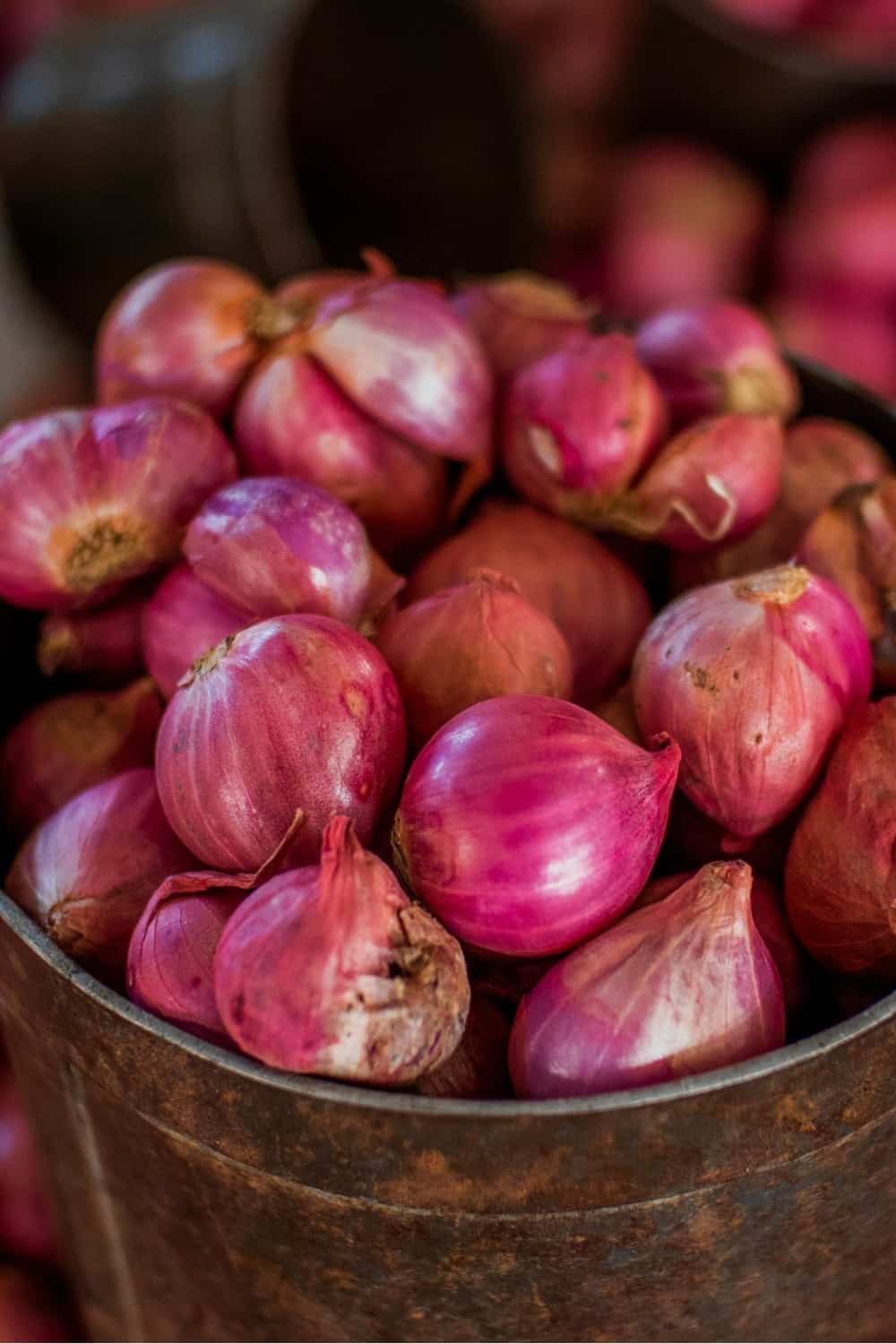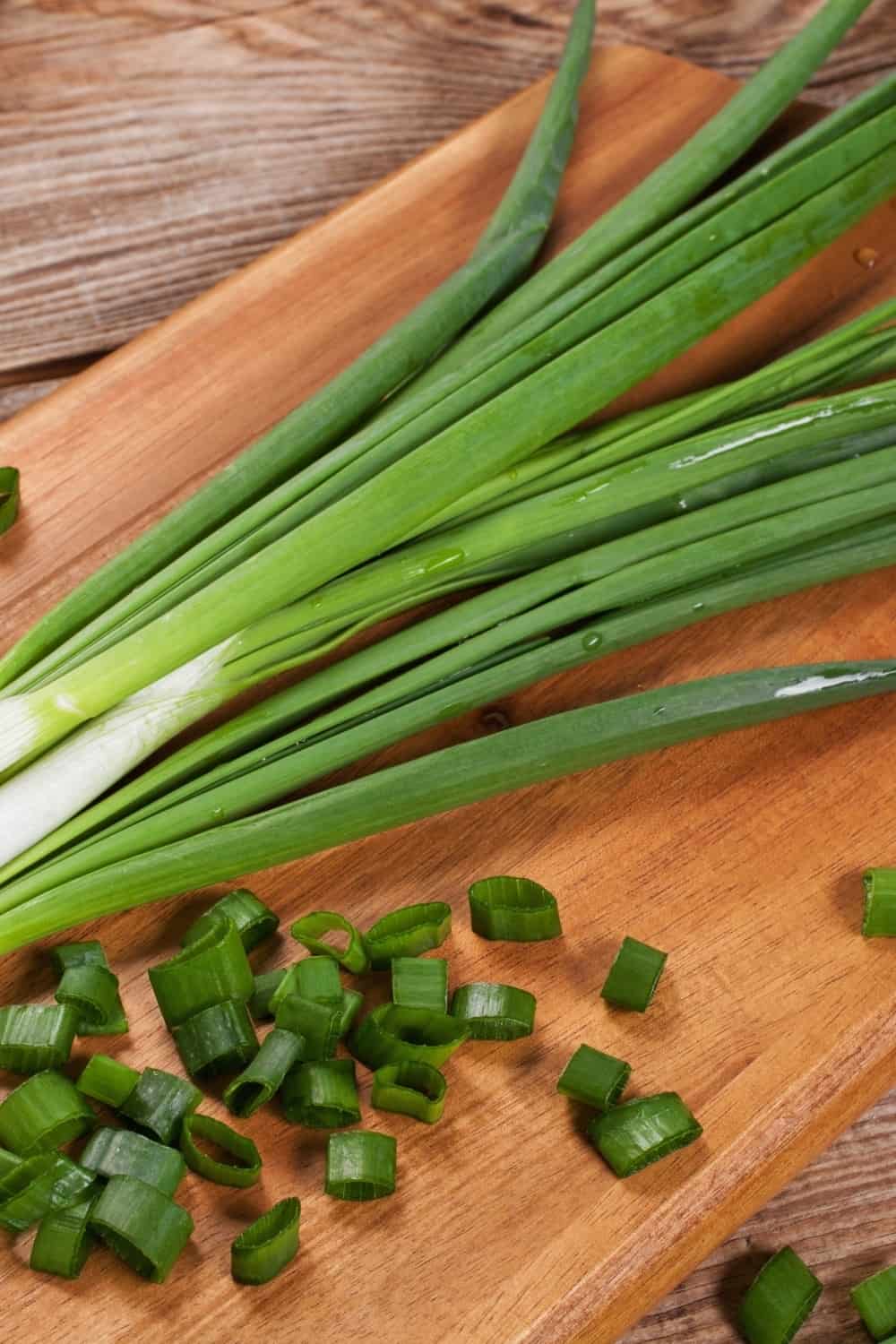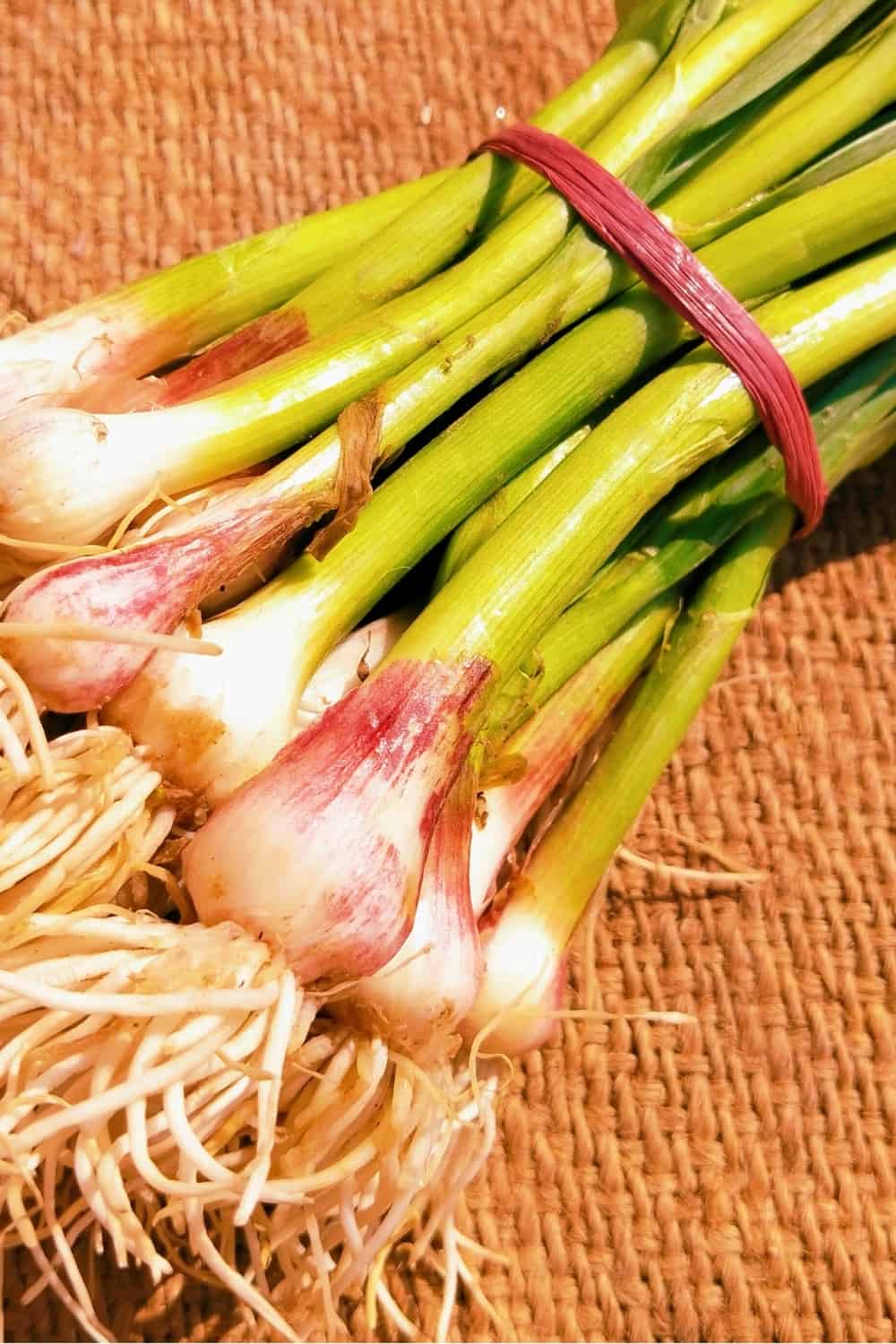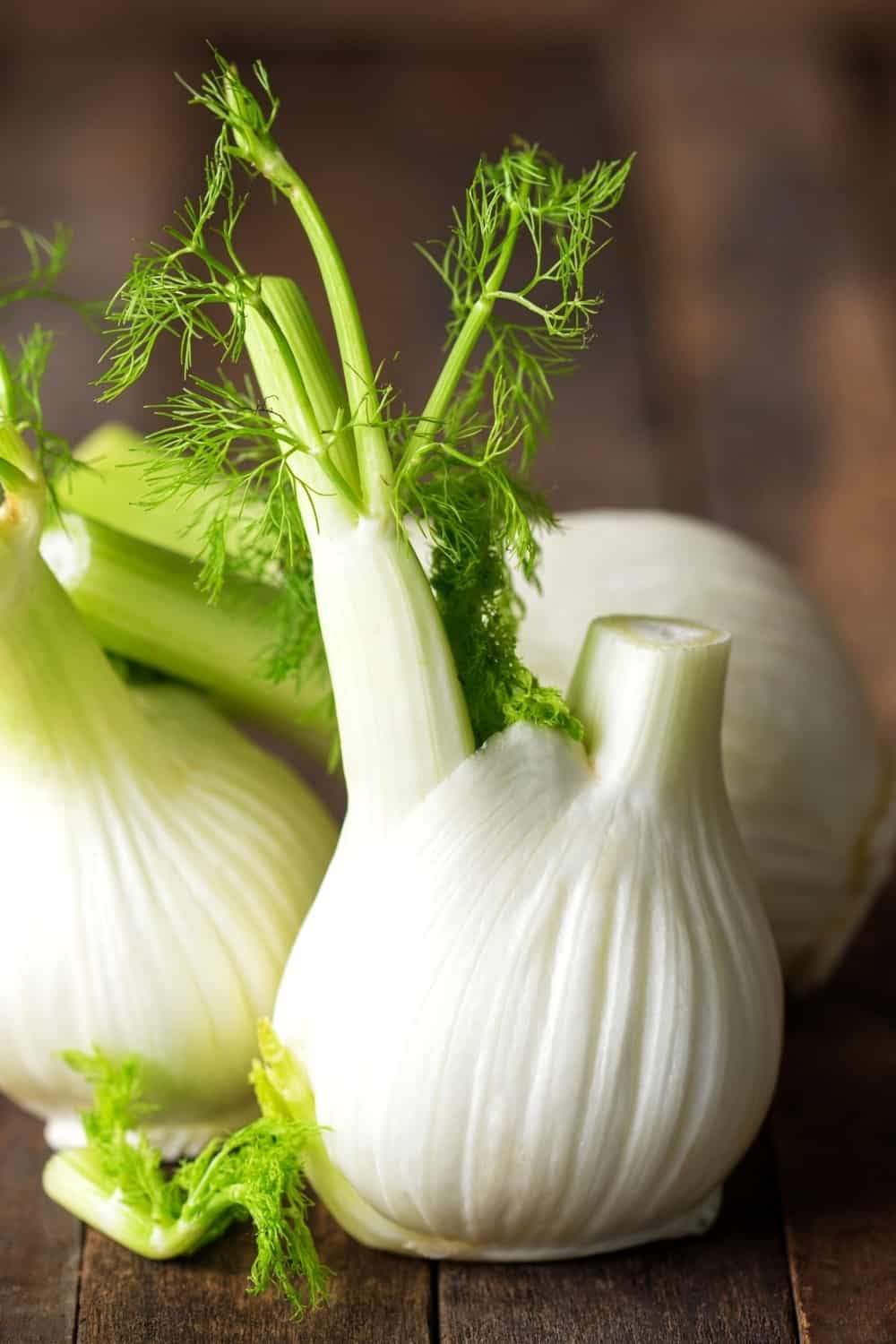They are not everyone’s favorite kind of food, but leeks make a great addition to various types of dishes, so it is a great thing to have them on hand.
They are very similar to onions and garlic since they are part of the same onion or Allium family. They also have a similar flavor, just a bit milder and, to be honest, they look like an extra large onion.
When you don’t have any at hand, it is quite logical to say that onions and garlic can be a suitable replacement. But what are some other substitutes for leeks to look for?
The list is quite long and is waiting to be explored.
1. Shallots

As you could conclude from the introduction part, onions are the best alternative for leeks. However, there is not just one type of onion. Shallots are a smaller type of onion that is milder in flavor than regular onions, making them a great substitute.
Pros:
• Similar flavor profile: Shallots have a delicate, mild flavor that is similar to leeks, which makes them a good substitute in many recipes.
• Size: Shallots are much smaller than leeks, which means that they are easier to chop and cook with. This can save time and effort in the kitchen.
• Availability: Shallots are more widely available than leeks in many areas, which makes them a more convenient option for many home cooks.
Cons:
• Different Texture: Shallots have a firmer texture than leeks, which can make them less desirable in recipes where a soft, melt-in-your-mouth texture is desired.
• Aroma: Shallots have a more robust aroma than leeks, which can be overpowering in some dishes.
How To Use As A Substitute:
As you already know, shallots are quite small compared to leeks, which means you’ll need to use a higher amount when substituting.
The general rule of thumb is to use 2 large shallots or 4 medium shallots for 1 large leek (1 cup of chopped leek).
You need to prepare them properly by peeling the outer skin of the shallots and slicing them thinly.
Since leeks are sauteed in most recipes, it is not out of hand to do the exact same thing with shallots. Saute them in a pan with a little oil or butter until they are soft and translucent. This will help to bring out their flavor and aroma.
You can use shallots in many recipes that require leeks, and the best ones include soups, sautés, or risottos. They can also be used as a topping for pizzas and flatbreads.
2. Sweet or White Onions

Sweet or white onions are one of the most common types of onions in the cooking world. Since onions, in general, are considered to be very similar to leeks, it is no surprise that they can serve as a good substitute.
Pros:
• Similar Flavor: While the flavor of onions is stronger and sharper than leeks, sweet or white onions can still provide a similar taste profile in many dishes.
• Availability: Unlike leeks, sweet and white onions can be found in almost any grocery store or supermarket.
• Cost: Sweet and white onions are generally less expensive than leeks, which can be a cost-effective option when cooking on a budget.
Cons:
• Stronger Flavor: The stronger flavor of onions may not be suitable for all recipes, particularly those that require a more delicate taste profile.
• Texture: Onions have a different texture than leeks and can become mushy if overcooked, which can affect the overall texture of the dish.
• Difficulty in preparation: Onions can be difficult to prepare compared to leeks because they need to be peeled and can burn your eyes when chopping them.
How To Use As A Substitute:
Onion is a great substitute for leeks since it has a similar flavor profile.
Because of that, the general rule of thumb is to use less of them, i.e. use 1 medium onion for 1 large leek (1 cup chopped).
Sweet onions are ideal because they have the mildest flavor (similar to that of leeks), but white onions can also work perfectly if you don’t overdo them. Avoid yellow onions because they have the strongest flavor when compared with sweet onions.
Sweet onions caramelize well due to their sugar content, so they can be perfect for roasting, making salads, and sandwiches.
White onions, on the other hand, are a great addition to dishes like salads, salsas, or guacamole.
3. Green Onions

Green onions, also known as scallions, are harvested when they are still young and before the bulb has fully developed. They look like a smaller version of leeks and have a similar taste profile to a leek’s onion-garlic flavors.
Pros:
• Flavor: Green onions have a mild, slightly sweet flavor that is similar to leeks but not as strong. This makes them a good substitute in recipes where you want to maintain a delicate flavor profile.
• Texture: Green onions have a similar texture to leeks, which can make them a good substitute in dishes where texture is important.
• Availability: Green onions are widely available in most grocery stores, making them a convenient substitute for leeks.
Cons:
• Limited Use: Although they can serve as a substitute in many recipes, green onions are not a good alternative in recipes where you desire a leek’s main flavor or strong onion flavor.
• Smaller Size: Green onions are smaller than leeks, so you may need to use more of them to achieve the desired flavor.
How To Use As A Substitute:
Scallions or green onions are much smaller in size than leeks, so you may need more of them when using them as a substitute.
My recommendation is to use 1 large leek with 6-8 scallions in your recipe and you will achieve almost the same flavor.
Add them raw in soups, omelets, tacos, or casseroles as a garnish. If you are adding in the cooked dishes, then use them at the end of the cooking process.
One more note. Since they have a milder flavor than leeks, you may need to adjust the seasoning in your recipe to achieve the desired taste. Taste the dish as you cook it and add salt, pepper, or other seasonings as needed.
4. Green Garlic

Green garlic, also known as baby garlic, is a young, immature garlic plant that is harvested before the bulb has fully formed. It looks like a green onion but has a distinct garlic flavor. It can serve as a decent substitute in some recipes.
Pros:
• Unique Flavor: Although it doesn’t have the same flavor as leeks and mature garlic, it has a unique mild and sweet flavor that can add depth and complexity to your dish.
• Nutritional Benefits: Like mature garlic, green garlic is high in antioxidants and has antimicrobial properties that may help boost your immune system.
Cons:
• Different Flavor: Green garlic tastes like normal garlic with onion-like flavors, which isn’t exactly the same as that of leeks.
• Different Texture: Green garlic has a different texture than leeks. It is softer and more tender, which can affect the texture of a dish if not used correctly.
• Availability: Green garlic is not as widely available as leeks, which can make it difficult to find.
How To Use As A Substitute:
Green garlic has a milder flavor than leeks, so you may need to use more of it to achieve the desired taste.
As a general rule, you can substitute 2-3 green garlic stalks for each leek.
To prepare green garlic, all you need to do is to cut off the root ends and remove any tough, fibrous outer layers of the green garlic stalks. Then, chop the stalks into thin rounds and add them to your cooking dish.
You can not use green garlic in every dish because of the different flavor profiles. This substitution will work where leeks are used as one of the ingredients and you do not require too much.
5. Onion Powder

A spice made from dehydrated, ground onions, onion powder can work well in those dishes where leeks are not the star ingredient. Logically, it won’t provide it with the same texture, but it can be a decent flavor-alternative in some dishes.
Pros:
• Concentrated Flavor: Onion powder has a concentrated flavor, so a little goes a long way. This can be helpful when you’re trying to replicate the flavor of leeks in a dish.
• Availability: Onion powder is a commonly used spice that can be found at most grocery stores, making it an accessible substitute for leeks.
• Long Shelf Life: Onion powder has a long shelf life and can be stored in a pantry or spice cabinet, making it a convenient option for those who don’t have fresh leeks on hand.
Cons:
• Texture: Obviously, onion powder lacks the texture of fresh or sauteed leeks, which consequently affects the overall texture of the dish.
• Flavor Profile: While onion powder does have a similar flavor to leeks, it lacks the subtle sweetness and herbaceous notes that leeks provide. This can make the final dish taste slightly different than if you had used fresh leeks.
• Additives: Some commercial brands of onion powder may contain additives or preservatives that can affect the taste and nutritional value of the final dish.
How To Use As A Substitute:
As you already know, onion powder has a more concentrated flavor than leeks, so it is essential to use it in moderation.
It is best to use 1 teaspoon of onion powder for 1 large leek (1 cup chopped).
Use onion powder in place of fresh leeks by adding it to the dish during the cooking process. For example, if you’re making a soup or stew, you can add a small amount of onion powder along with other seasonings to flavor the dish.
You can also use it as a seasoning, especially if you want to mimic the flavor of leeks. For example, you can sprinkle a small amount on roasted veggies, grilled meats, or even popcorn for added flavor. It is a great flavor addition to the popular Frech fries or Kennebec fries.
6. Celery

Celery is a type of vegetable that is commonly used in many cuisines around the world. This vegetable that starts with c is mild in flavor and along with shallots, white onion, and sweet onion, it matches the overall flavor profile that comes from using leeks.
Pros:
• Similar Flavor: Celery has a slightly bitter and herbaceous flavor that can complement many of the same dishes as leeks, making it a suitable replacement.
• Nutrition: Celery is loaded with various antioxidants which are beneficial in fighting oxidative stress and inflammation. It is also high in vitamins A, C, and K, as well as potassium and folate.
• Availability: Celery is more widely available and less expensive than leeks in most grocery stores, making it a more accessible substitute.
Cons:
• Texture: While leeks are soft and silky, celery is crunchy and fibrous. This may affect the overall texture and mouthfeel of the dish.
• Aroma: Leeks have a unique, sweet aroma that is difficult to replicate. Celery does not have the same scent, which may change the overall aroma of the dish.
How To Use As A Substitute:
Celery can be prepared in a similar way to leeks by washing, trimming, and slicing them thinly. It’s important to remove any tough, fibrous parts of the celery before using it, as these can be unpleasant to eat.
Also, you can freely use the same amount of celery as the recipe requires for leeks.
When cooking it, it is important to adjust the cooking time accordingly because celery cooks faster than leeks.
In dishes like soups or stews, you may want to add the celery later in the cooking process to prevent it from becoming mushy.
In dishes where leeks are sautéed, like quiches or frittatas, you can sauté the celery in the same way, but keep a close eye on it to prevent it from burning.
7. Fennel

Fennel is a plant native to the Mediterranean region, but it is now widely cultivated and used in various parts of the world. Its bulbous base is used as a vegetable in cooking, and although it is not a perfect substitute, it can work in some dishes.
Pros:
• Texture: Fennel has a similar texture to leeks, making it a good substitute in recipes where the texture of the vegetable is important.
• Nutritional Benefits: The part of fennel used in cooking, the fennel bulb, is highly nutritious, i.e. it contains a high amount of fiber, vitamin C, potassium, and manganese, and it also has a decent amount of calcium, iron, and magnesium.
Cons:
• Different Flavor Profile: Unlike leeks, fennel has an anise-like flavor that can change the overall taste of the dish that requires leeks.
• Appearance: Fennel has a bulb-like shape and green fronds, while leeks have long white and light green stalks. This can affect the appearance of the dish, especially if it is a visual component of the recipe.
• Availability: Fennel may not be as widely available as leeks, making it harder to find as a substitute.
How To Use As A Substitute:
You first need to prepare the fennel properly because you will have to use only the fennel bulb.
In order to do that, trim off the stalks and feathery fronts and remove any tough or discolored outer layers. Cut the bulb in half lengthwise and remove the tough core, and then slice the bulb into thin slices or chop it into small pieces.
After preparing it, you can add it to the dish in a similar way as you would add leeks.
Generally, you can use about the same amount of fennel as leeks, but you may want to taste the dish as you go and adjust the seasoning and other ingredients as needed.
You can use fennel in the dish that calls for sautéed leeks but you will have to sauté the fennel in some oil or butter in the skillet first. Once you do that, you can add it to soups, stews, and casseroles instead of leeks.
Finally, you can add raw fennel to salads and side dishes. Thinly slice the fennel and toss it with other vegetables, fruits, and dressings to create a flavorful and healthy dish.
8. Chives

Chives are not a vegetable at all, but rather an herb. But they come from the Allium family, the same family of garlic, onions, and leeks. Since they are not a vegetable, they are not a perfect choice but can work as a substitute in some cases.
Pros:
• Flavor: Chives have a mild, onion-like flavor that is quite similar to that of leeks. It is not exactly the same, but it can work in some dishes to some extent.
• Usage: Chives are easy to chop and can be added to dishes without the need for cooking, making them a convenient substitute for leeks.
• Nutrition: They make a healthy substitution since they are a good source of antioxidants, as well as vitamins A, C, and K. Chives also contain a decent amount of folate, calcium, and potassium.
Cons:
• Texture: Chives have a much finer texture than leeks, which can affect the overall texture of a dish when used as a substitute.
• Availability: Chives may not be as widely available as leeks, making them harder to find as a substitute.
How To Use As A Substitute:
Since they are not vegetables but herbs, chives are used differently in the recipes.
Generally, you can use about the same amount of chives as leeks, but you may want to taste the dish as you go and adjust the seasoning and other ingredients as needed.
Since they have a fine texture, it is important to chop them finely before using them as a substitute for leeks.
My recommendation is to use them raw. It is best to simply sprinkle the finely chopped chives over the dish, or mix them in with the other ingredients.
Always add them at the end of the cooking process because this will help to preserve their flavor and texture.
Finally, because of the different textures, they may not work as well as a substitute in dishes where the texture of the vegetable is important. However, they can be a good substitute in dishes where the flavor is the most important consideration.
In my opinion, it is best to use them as a garnish.
9. Parsley

Like chives, parsley is also a herb, and it belongs to the Apiaceae family, which also includes other popular herbs such as cilantro, culantro, dill, and fennel. It is a popular addition to many dishes and it can be a decent substitute for leeks.
Pros:
• Flavor: While it is not the same as the mild, slightly sweet flavor of leeks, parsley can still add a fresh, herbaceous flavor to your dish that requires leeks, making it a decent substitute.
• Availability: Parsley is widely available at grocery stores and can be found fresh or dried, making it an easy substitute for leeks.
• Nutritional Value: Using parsley as a substitute for leeks can add a nutritional boost to dishes since it is a good source of vitamins A, C, and K, as well as various antioxidants.
Cons:
• Texture: Parsley has a very different texture from leeks. Namely, parsley is a leafy herb, whereas leeks have a bulbous base and long, thick leaves.
• Different Cooking Process: Parsley is a delicate herb that should be added to dishes towards the end of the cooking process, while leeks are often cooked for longer periods to soften their texture.
How To Use As A Substitute:
Although parsley can add a unique and refreshing flavor to the dish, you have to know that it won’t provide it with the same flavor and texture as leeks.
Because of that, it is best to add parsley to some types of dishes where the flavor and texture are less important, like in soups and stews.
If the texture is important, you can try adjusting it by adding other ingredients that can provide a similar texture, such as chopped carrots, celery, or onions.
Finally, leeks are mostly added at the beginning of the cooking process, and it is often cooked for longer periods of time to soften their texture.
This rule doesn’t apply to parsley since it is best to add it toward the end of the cooking process.
10. Spinach

Spinach is one of the most popular vegetables, and not without reason. It is a leafy green veggie and is very nutritious. It is last on our list because it doesn’t share too many similarities with leeks, but it can serve as a decent substitute in some dishes.
Pros:
• Nutritional Value: Spinach is one of the most nutritious leafy green veggies, as it is rich in vitamins A and C, iron, and other essential minerals. It is also very low in calories, making it a very healthy alternative to leeks.
• Availability: Spinach is widely available all year round in most grocery stores, making it a convenient substitute for leeks if you can’t find them or if they are out of season.
• Flavor For All Dishes: While spinach has a different flavor profile than leeks, it has a mild, slightly sweet taste that can work well in certain recipes as a replacement for the more pungent flavor of leeks.
Cons:
• Texture: Unlike firm, crunchy leeks, spinach is much softer and can even become mushy when cooked for too long. This can be a problem if you’re using leeks to add texture or crunch to a dish.
• Different Flavor: While spinach has a mild, slightly sweet taste, it lacks the distinct onion-like flavor of leeks. If you’re using leeks for their unique flavor profile, spinach may not be the best substitute and could result in a less flavorful dish.
How To Use As A Substitute:
Although it isn’t a perfect alternative, spinach can be added to some dishes as a substitute for leeks.
For example, you can add it to soups and stews if you are using leeks to add flavor.
You can replace them with spinach by sautéing a large amount of spinach in butter or oil until it wilts and reduces in volume.
You can then add the spinach to the soup or stew towards the end of the cooking time to ensure it doesn’t become too mushy.
Some other types of dishes where spinach can replace leeks include stir-fries, salads, pasta dishes, quiches, and frittatas. Spinach salad, for example, is a great side for sandwiches.
